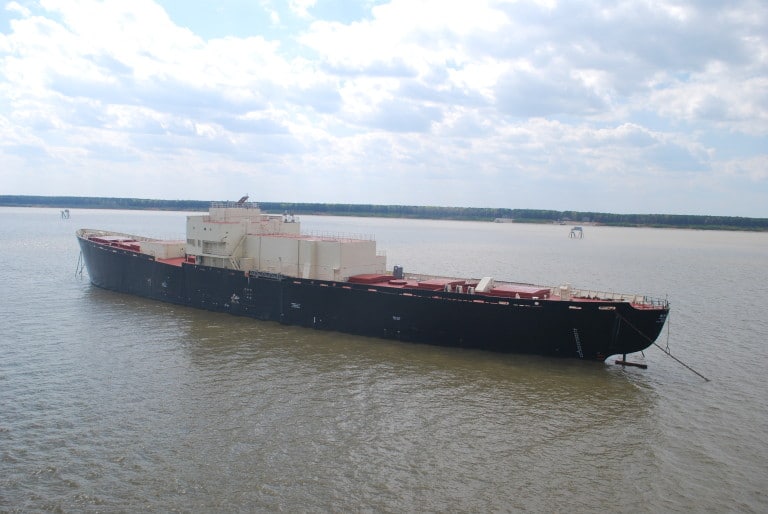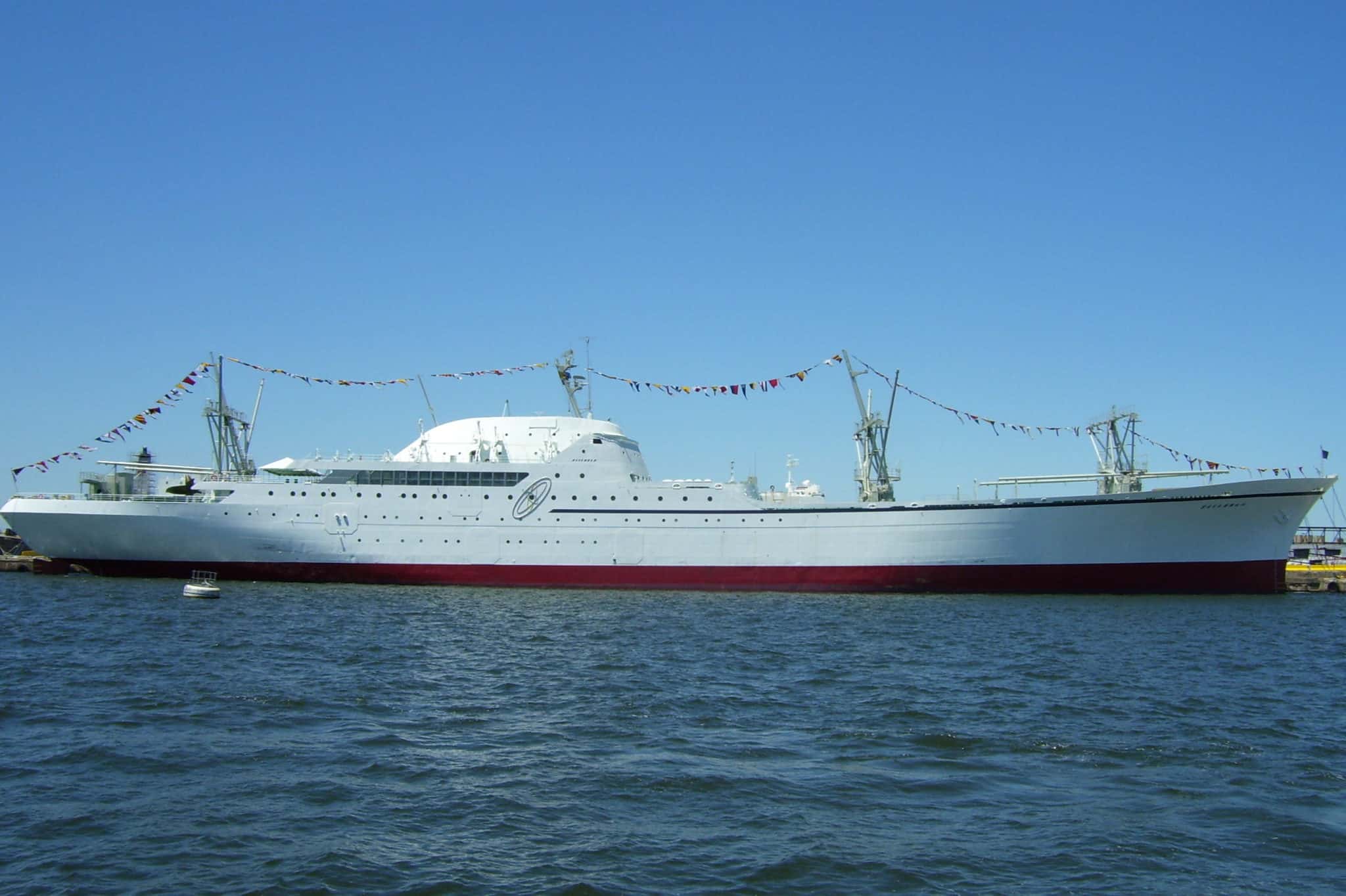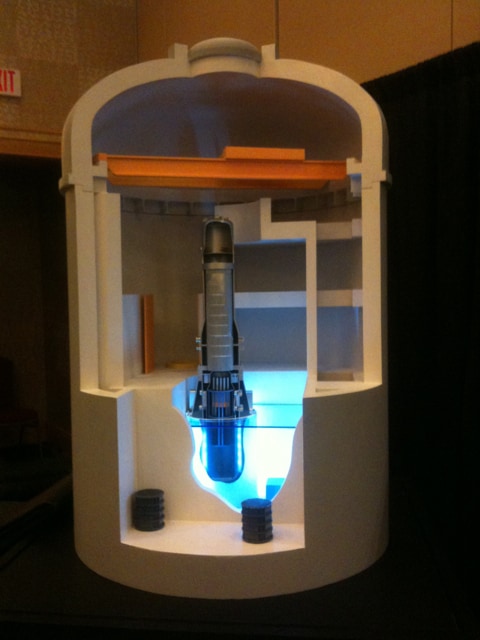Nuclear Research Ship: Japanese Learn Nuclear Techniques at Sea
The Japanese nuclear ship Mutsu is designed not for show, but for research. She is currently being used by the Japan Atomic Energy Research Institute (JAERI) as a test bed to validate computer models of the behavior of pressurized water reactors in an ocean environment.
The Mutsu has a 10,000 shaft horsepower nuclear engine. The heat source is a two-loop pressurized water reactor with a rated core power level of 36 Megawatts (thermal). She is 130.5 meters long, with a breadth of 19 meters and a gross tonnage of 8240 tons. Her maximum speed is 17.5 knots.
A Less Stable Environment
Although the Japanese have a significant number of pressurized water reactors operating as land based central power stations, they do not have extensive experience in operating pressurized water reactors in the less stable environment found at sea.
On land, one can always count on gravity to operate in a consistent direction relative to the nuclear reactor. Gravity is not so predictable on a pitching and rolling ship.
JAERI has designed a mini-computer based computer simulation of a nuclear reactor with the ability to enter values for wave height, ship maneuvering characteristics and reactor component specifications.
The components of the pressurized water reactor that are affected by ship motion are more fully instrumented than usual in the Mutsu. Key parameters that are measured and compared to the computer model include steam generator levels, pressurizer level, reactor power, average coolant temperature, steam flow rate and propeller shaft revolutions.
The technical literature describing the testing discusses some features of the Mutsu that are of interest to other reactor plant operators and designers.
The engine has several modes of automatic control. In one mode, a proportional-integral controller adjusts the steam turbine throttle valve to maintain a constant propeller shaft rotation rate.
In this mode, when the ship is moving against the waves, the reactor power level is higher than it is with a following sea. Because the ship motion serves to increase the frequency of the wave action, control signals are closely spaced and of small amplitude. Parameters like reactor power and steam flow change quickly but in small increments.
In a following sea, reactor power variations of 5 percent or more are common with a constant propeller rotation rate. The changes that occur in a following sea are due to the effects of surfing and climbing waves. The reactor also has an automatic system to adjust control rods to keep the average coolant temperature in a narrow control band of 273 +/-1.2 C. (523 +/- 2.2 F). The system will make small adjustments in control rod position if average temperature leaves the band. This system also senses reactor power level to ensure that limits are not exceeded for the particular flow condition in existence when the signal is sent to move the rods to raise temperature.
The emphasis on automation shows that the Japanese intend for their nuclear commercial ships to operate with a small engineering crew.
Following acceptance testing in 1992, JAERI determined that their computer model adequately predicts the actual behavior of the ship well enough so that the model can be used for designing advanced reactor systems. There are two such reactors undergoing conceptual design in Japan, the MRX (Advanced Marine Reactor) and the DRX (Deep-Sea Reactor.)




